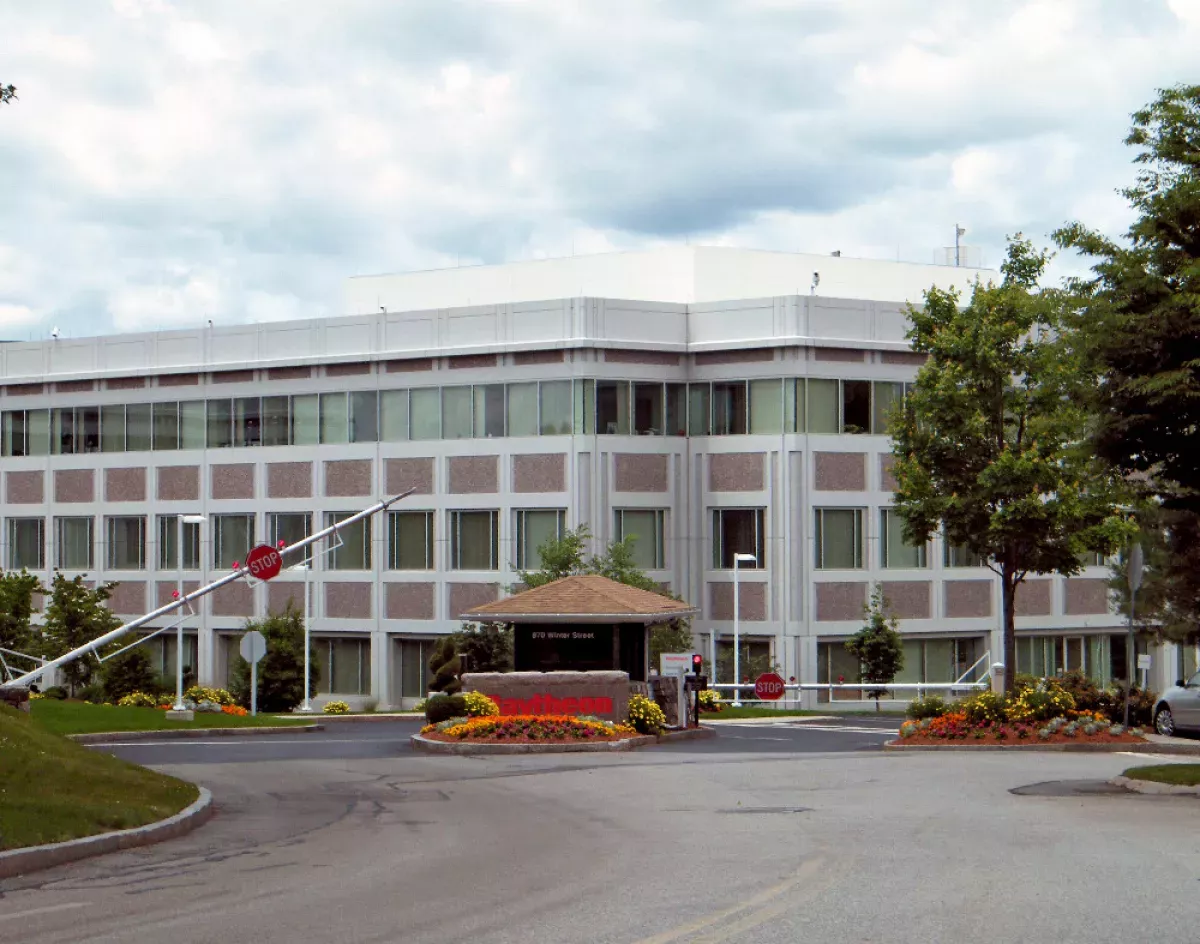Raytheon, a major U.S. defense contractor, specialized in weapons, military electronics, and commercial electronics. Known for being the world's largest guided missile producer, Raytheon also previously manufactured aircraft. In 2020, it merged with United Technologies Corporation, initially forming Raytheon Technologies, and later becoming RTX Corporation in 2023.
1901: Founding of Submarine Signal Company
The Submarine Signal Company, acquired by Raytheon in 1946, was founded in 1901.
1922: Initial Headquarters in Cambridge
From its establishment in 1922, Raytheon initially operated its headquarters in Cambridge, Massachusetts.
1922: Establishment of Raytheon's Predecessor
Raytheon's origins trace back to 1922 with the founding of the American Appliance Company.
1922: Founding of American Appliance Company
Vannevar Bush, Laurence K. Marshall, and Charles G. Smith established the American Appliance Company in Cambridge, Massachusetts, in 1922, initially focusing on refrigeration technology before shifting to electronics.
1925: Name Change and Marketing of Rectifier
The company changed its name to Raytheon Manufacturing Company in 1925 and began successfully marketing its rectifier under the Raytheon brand.
1928: Merger with Q.R.S. Company
Raytheon merged with Q.R.S. Company, an American manufacturer of electron tubes and switches, in 1928, forming a successor company with the same name.
1928: Reincorporation and Merger
Raytheon's predecessor was reincorporated in 1928 and merged with Q.R.S. Company, retaining the Raytheon name.
1933: Acquisition of Acme-Delta Company
In 1933, Raytheon diversified by acquiring Acme-Delta Company, a producer of transformers, power equipment, and electronic auto parts.
1945: Dominance in Magnetron Production
By the end of World War II in 1945, Raytheon was responsible for approximately 80% of all magnetrons manufactured, a testament to their crucial role in radar technology during the war.
1945: Invention of the Microwave Oven
Percy Spencer of Raytheon invented the microwave oven in 1945, capitalizing on the microwave-generating capabilities of the magnetron.
1946: Acquisition of Submarine Signal Company
Raytheon acquired the Submarine Signal Company in 1946, expanding its electronics capabilities and gaining expertise in maritime safety equipment.
1947: Demonstration of the Radarange
Raytheon demonstrated the Radarange microwave oven for commercial use in 1947, marking a significant step in the development of this revolutionary kitchen appliance.
1948: Charles Francis Adams IV Becomes President
Charles Francis Adams IV was appointed as Raytheon's President in 1948 and served until 1960.
1950: Lark Missile Success
In 1950, Raytheon achieved a significant milestone when its Lark missile became the first guided missile to successfully destroy a target aircraft in flight.
1951: Raytheon Begins Operations at Tucson Plant
In 1951, Raytheon commenced operations at its Tucson Plant in Arizona, a facility acquired through a merger with Hughes. The plant's activities involved the use and disposal of metals, chlorinated solvents, and other substances, which would later lead to environmental concerns.
1953: RAYDAC Computer for the US Navy
Raytheon developed the RAYDAC computer for the U.S. Navy, which became operational in 1953, although it was already technologically outdated by that time.
1954: Joint Venture with Honeywell
Raytheon entered into a joint venture with Honeywell in 1954, forming the Datamatic Corporation.
1958: Acquisition of Applied Electronics Company & Name Change
Raytheon acquired the marine electronics company Applied Electronics Company and officially changed its name to Raytheon Company in 1958.
1959: Adoption of Raytheon Company Name
In 1959, the company formally adopted the name Raytheon Company.
1960: End of Adams IV's Presidency
Charles Francis Adams IV's tenure as President of Raytheon concluded in 1960.
1961: Relocation to Lexington
In 1961, Raytheon's headquarters was moved from Waltham to Lexington, Massachusetts.
1961: Merger with A.C. Cossor
The British electronics company A.C. Cossor merged with Raytheon in 1961.
1965: Acquisition of Amana Refrigeration
Raytheon acquired Amana Refrigeration, Inc., a manufacturer of refrigerators and air conditioners, in 1965.
1966: Entry into Educational Publishing and Apollo Guidance Computer
Raytheon expanded into educational publishing with the acquisition of D.C. Heath and Company in 1966. In the same year, the company also introduced the Apollo Guidance Computer, which played a vital role in NASA's Apollo missions.
1967: First Countertop Microwave Oven
Leveraging the Amana brand and distribution network, Raytheon introduced the first countertop household microwave oven in 1967.
1980: Raytheon Acquires Beech Aircraft Corporation
In 1980, Raytheon made a significant move into the aviation industry by acquiring Beech Aircraft Corporation, a renowned manufacturer of general aviation aircraft.
November 1991: Contamination Discovered at E-Systems Site in St. Petersburg
In November 1991, contamination was discovered at the E-Systems site in St. Petersburg, Florida, which Raytheon later acquired. The contamination involved soil and groundwater, polluted with trichloroethylene and 1,4-Dioxane, raising environmental concerns.
1991: Patriot Missile Gains International Recognition
The Persian Gulf War in 1991 brought significant international attention to Raytheon's Patriot missile, leading to a surge in sales for the company globally.
1993: Raytheon Acquires Corporate Jets Inc.
Expanding its presence in the aircraft industry, Raytheon acquired Corporate Jets Inc. in 1993, gaining the Hawker line of business jets from British Aerospace.
1994: Formation of Raytheon Aircraft Company
In 1994, Raytheon merged its recent acquisitions, Beech Aircraft Corporation and Corporate Jets Inc., to establish Raytheon Aircraft Company.
1995: Raytheon Acquires E-Systems
In 1995, Raytheon acquired E-Systems, a Dallas-based company, as part of its strategy to strengthen its position in the defense electronics sector.
1996: Raytheon Acquires Chrysler's Defense Electronics and Aircraft-Modification Businesses
Furthering its expansion in the defense sector, Raytheon acquired Chrysler Corporation's defense electronics and aircraft-modification businesses in 1996.
1996: Raytheon Begins Groundwater Testing in St. Petersburg
In 1996, Raytheon initiated groundwater testing at its St. Petersburg site, acquired from E-Systems, in response to the contamination discovered in 1991. This marked the beginning of long-term monitoring and investigation into the environmental issue.
1997: Raytheon Acquires Defense Unit of Texas Instruments
Continuing its acquisition spree, Raytheon purchased the defense unit of Texas Instruments, known as Defense Systems & Electronics Group, in 1997.
October 12, 1999: Raytheon Exits Personal Rapid Transit Business
On October 12, 1999, Raytheon made the decision to discontinue its PRT 2000 system and exit the personal rapid transit (PRT) business.
2000: Raytheon Exits Personal Rapid Transit Business
Citing high development costs and insufficient market demand, Raytheon shut down its PRT 2000 system in 2000, marking its exit from the personal rapid transit sector.
2001: Raytheon Office Destroyed in September 11 Attacks
During the tragic events of September 11, 2001, Raytheon's office located on the 91st floor of the World Trade Center's South Tower was destroyed in the collapse following the impact of United Airlines Flight 175.
2003: Raytheon's US Semiconductor Business Focuses on GaAs Components
By 2003, Raytheon's US semiconductor business had shifted its focus, specializing in gallium arsenide (GaAs) components for radio communications and infrared detectors.
2003: Relocation to Waltham
In 2003, Raytheon's headquarters was moved from Lexington, Massachusetts to Waltham, Massachusetts.
2003: William H. Swanson Becomes CEO of Raytheon
William H. Swanson took on the role of CEO of Raytheon in 2003.
2005: Groundwater Contamination Spreads at Raytheon's St. Petersburg Site
In 2005, groundwater monitoring revealed that the contamination at Raytheon's St. Petersburg site, inherited from the E-Systems acquisition, had spread beyond the initial area. This discovery heightened concerns about the environmental impact and potential health risks.
August 2006: Raytheon Stream Contact Centre in Derry Attacked by Protesters
On August 9, 2006, the Stream Contact Centre in Derry, Northern Ireland, operating under a contract with Raytheon, was targeted by protesters. The incident involved destruction of property, including computers, documents, and the mainframe, and an eight-hour occupation of the facility, resulting in arrests.
November 2007: Raytheon Acquires Sarcos
In November 2007, Raytheon acquired Sarcos, a company specializing in robotics research and production, for an undisclosed amount.
2007: Divestiture of Corporate and Special-Mission Aircraft Business
In early 2007, Raytheon ceased its involvement in corporate and special-mission aircraft.
2007: Raytheon Sells Aircraft Operations
Raytheon decided to divest its aircraft operations in 2007, selling it off. The divested entity went on to operate as Hawker Beechcraft.
April 2008: Lawsuits Filed Against Raytheon Plant in St. Petersburg
In April 2008, the Raytheon Company plant in St. Petersburg, Florida, faced two lawsuits alleging health risks, property devaluation, and contamination. The lawsuits raised concerns about carcinogenic contaminants found in the groundwater, including trichloroethylene, 1,4-dioxane, and vinyl chloride.
May 19, 2008: Trial Begins for Activists Involved in Raytheon Stream Contact Centre Attack
The trial for six individuals accused of involvement in the August 2006 attack on the Raytheon Stream Contact Centre in Derry commenced on May 19, 2008, at the Laganside Courts in Belfast. They faced charges of criminal damage and affray under terrorism laws.
May 31, 2008: Raytheon Given Deadline to Investigate Groundwater Contamination
On May 31, 2008, Raytheon faced a deadline from the Florida Department of Environmental Protection (DEP) to investigate groundwater contamination at its St. Petersburg site, acquired in 1995. Despite ongoing testing since 1996, the lack of a final report prompted this action. The contamination, discovered in 1991, involved volatile organic compounds and raised concerns about its spread.
December 2010: Raytheon Acquires Applied Signal Technology
Raytheon continued its acquisition strategy in December 2010 by agreeing to purchase Applied Signal Technology for $490 million.
2010: Continued Presence of Cossor within Raytheon
As of 2010, the Cossor division was still operational within the Raytheon group.
2012: Ranking as Fifth-Largest Military Contractor
As of 2012, Raytheon held the position of the world's fifth-largest military contractor.
2013: Raytheon Receives EPA Goal Achievement Award
In 2013, Raytheon received the Goal Achievement Award from the Environmental Protection Agency (EPA) in recognition of its exceptional greenhouse gas management practices, highlighting the company's commitment to environmental sustainability.
March 2014: Thomas Kennedy Named CEO of Raytheon
In March 2014, Thomas Kennedy was appointed as the CEO of Raytheon Company, succeeding William H. Swanson.
September 2014: Thomas Kennedy Becomes Chairman and CEO of Raytheon
Thomas Kennedy assumed the position of Chairman of Raytheon in September 2014, adding to his existing role as CEO, while William H. Swanson, the previous Chairman, stepped down.
October 2014: Raytheon Wins 3DELRR Contract
Raytheon secured a significant victory in October 2014 by winning a contract to develop the 3DELRR, a next-generation long-range radar system for the US Air Force, estimated to be worth $1 billion.
December 2014: Raytheon's Top Institutional Shareholders
As of December 2014, publicly available reports indicated that the top ten institutional shareholders of Raytheon included prominent names like Wellington Management Company, Vanguard Group, State Street Corporation, Barrow, Hanley, Mewhinney & Strauss, BlackRock Institutional Trust Company, BlackRock Advisors, Bank of America, Bank of New York Mellon, Deutsche Bank, and Macquarie Group.
2014: Hawker Beechcraft Becomes Part of Textron Aviation
In 2014, Hawker Beechcraft, formerly Raytheon's aircraft operations, became part of Textron Aviation.
May 2015: Raytheon Acquires Websense
Raytheon acquired cybersecurity company Websense, Inc. from Vista Equity Partners for $1.9 billion in May 2015, merging it with RCP to form Raytheon|Websense.
October 2015: Raytheon|Websense Acquires Foreground Security
In October 2015, Raytheon|Websense further expanded its cybersecurity capabilities by acquiring Foreground Security for $62 million.
2015: Third-Largest Defense Contractor in the US
By 2015, Raytheon became the third-largest defense contractor in the United States based on defense revenue.
January 2016: Raytheon|Websense Acquires Stonesoft and Becomes Forcepoint
Raytheon|Websense acquired firewall provider Stonesoft from Intel Security in January 2016 for an undisclosed sum and subsequently rebranded itself as Forcepoint.
July 2016: USAF Delays 3DELRR Contract Award
Following protests from Lockheed Martin and Northrop Grumman regarding the 3DELRR contract, the USAF decided to postpone the award of the EMD contract until 2017, with plans to issue a revised solicitation by the end of July 2016.
July 2016: Poland Plans Patriot Missile Defense System Upgrade with Raytheon
In July 2016, Poland's Defence Minister, Antoni Macierewicz, announced plans to sign a letter of intent with Raytheon for a $5.6 billion deal to enhance Poland's Patriot missile-defense shield.
2017: Saudi Arabia Signs Defense Deals with Raytheon
In 2017, Saudi Arabia entered into significant business agreements worth billions of dollars with several American companies, with Raytheon being one of the prominent beneficiaries.
2017: Raytheon Wins 3DELRR Contract Again
In 2017, after reevaluation and despite earlier protests, the USAF once again awarded the contract for the 3DELRR to Raytheon.
2017: Raytheon Reports Strong Financial Performance
Raytheon announced strong financial results for the fiscal year 2017, reporting earnings of US$2.024 billion and annual revenue of US$25.348 billion, reflecting a 5.1% increase compared to the preceding fiscal year.
November 2018: Raytheon's Market Capitalization Exceeds US$51.7 Billion
By November 2018, Raytheon's shares were trading at over $164 per share, contributing to a market capitalization surpassing US$51.7 billion.
2018: Raytheon's Workforce and Revenue
By 2018, Raytheon had a global workforce of approximately 67,000 employees and generated annual revenues of about US$25.35 billion.
July 2019: Qatar Commits to Acquiring Raytheon's NASAM and Patriot Missile Defense Systems
In July 2019, Qatar's Ministry of Defense made a commitment to purchase Raytheon's NASAM and Patriot missile defense systems.
February 2020: Raytheon Completes First LTAMDS Radar Antenna Array
In February 2020, Raytheon achieved a significant milestone by completing the first radar antenna array for the US Army's advanced missile defense radar, the Lower Tier Air and Missile Defense Sensor (LTAMDS), designed to replace the existing Patriot air and missile defense system sensor.
April 2020: Raytheon Merges with United Technologies Corporation
A major event in Raytheon's history occurred in April 2020 when the company merged with United Technologies Corporation, resulting in the formation of Raytheon Technologies. The newly formed entity established its headquarters in Arlington, Virginia.
July 2023: Name Change to RTX Corporation
In July 2023, Raytheon Technologies changed its name to RTX Corporation.
July 2023: Raytheon Technologies Becomes RTX Corporation
In July 2023, Raytheon Technologies underwent a significant transformation, rebranding itself as RTX Corporation and merging its Raytheon Intelligence & Space and Raytheon Missiles & Defense business segments to create a consolidated Raytheon business segment.
Mentioned in this timeline
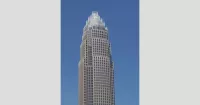
Bank of America is a multinational investment bank and financial...
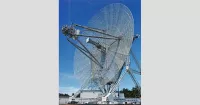
Radar is a radiodetermination system using radio waves to detect...
Qatar is a country located on the Qatar Peninsula in...
Saudi Arabia officially the Kingdom of Saudi Arabia KSA is...
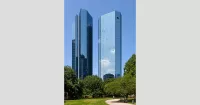
Deutsche Bank is a German multinational investment bank and financial...
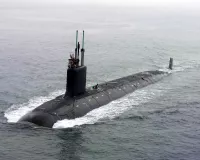
A submarine is a watercraft capable of independent operation underwater...
Trending
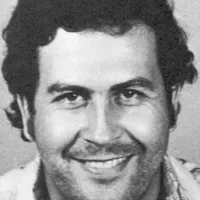
2 months ago Virginia Vallejo, Pablo Escobar's ex, reveals health struggle: Suffered a brutal stroke.
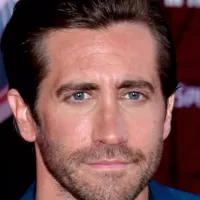
7 months ago Jake Gyllenhaal's 'Othello' Snubbed by Tony Awards Despite Box Office Success with Denzel Washington.
8 days ago World Cup 2026 Draw: Brazil in Group C, France's Path

Maisie Williams is an English actress who gained widespread recognition for her role as Arya Stark in the HBO series...

2 months ago Dakota Johnson's Epic Response to 'Naked Dress' Queries and Red Carpet Fashion
21 days ago SpaceX Falcon 9 Launches Starlink Satellites from Cape Canaveral on 150th Mission.
Popular

Candace Owens is an American conservative political commentator and author...

Ilhan Omar is an American politician currently serving as the...

XXXTentacion born Jahseh Dwayne Ricardo Onfroy was a controversial yet...

Tom Cotton is an American politician and Army veteran currently...

Kelsey Grammer is an accomplished American actor producer and singer...
The Kennedy Center Honors are annual awards recognizing individuals and...
